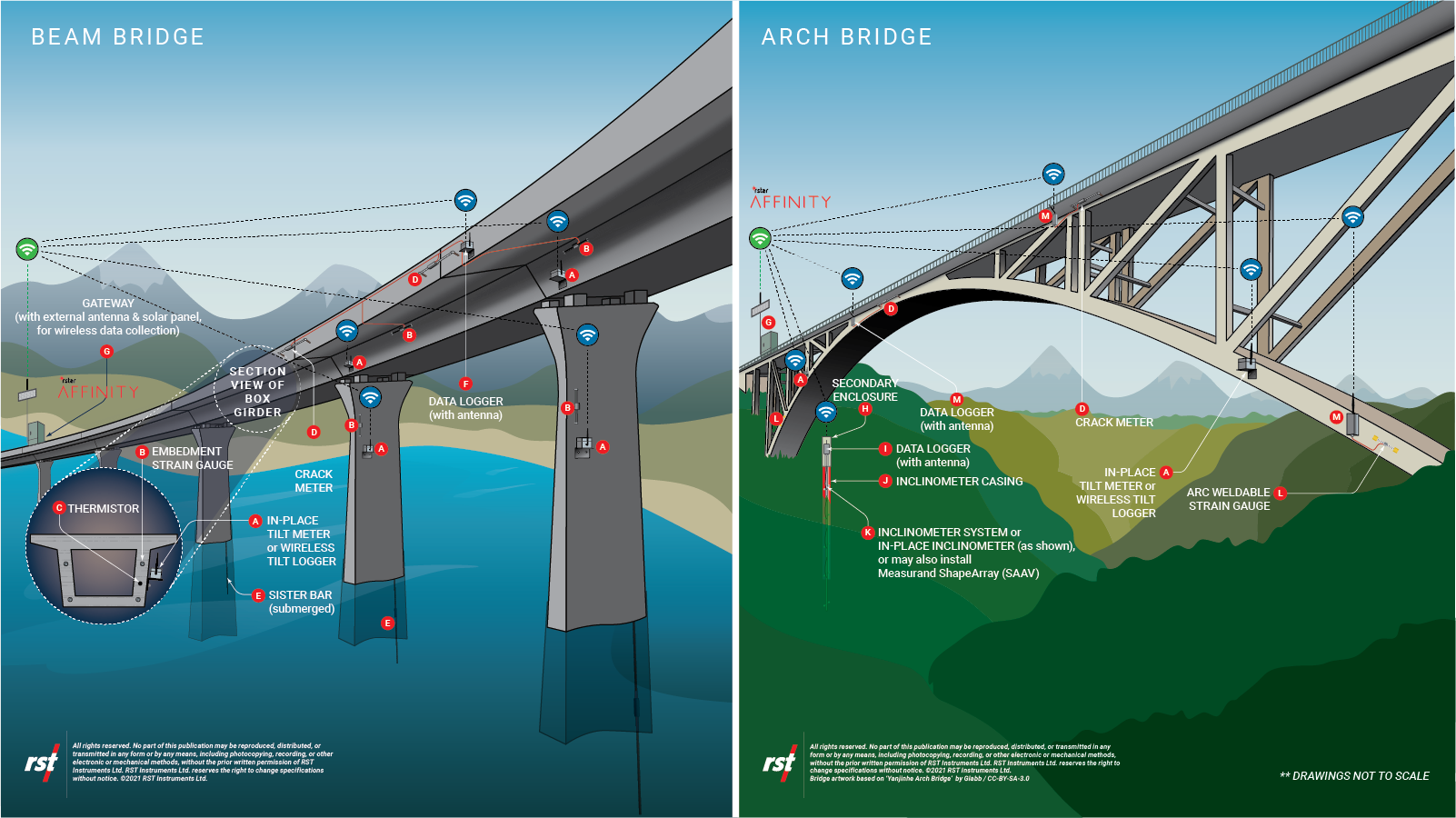


Bridge monitoring is the process of regularly evaluating a bridge's performance, safety, and structural integrity. This entails detecting possible problems such fractures, corrosion, load strains, vibrations, and environmental effects utilizing a variety of technologies and techniques. The objective is to find issues early on in order to stop breakdowns and guarantee the longevity and security of the bridge.
+Get QuoteBridge Monitoring's Principal Elements:
1.Structural Health Monitoring (SHM)
Strain gauges, accelerometers, displacement sensors, temperature sensors, and fiber optic sensors are a few examples of sensors.
Data Collection: In real time, sensors record temperature variations, vibrations, and strain on the bridge.
Data analysis: To find any irregularities or warning indications of decline, sophisticated software examines the data.
2.Frequent Visual Inspections: To look for obvious deterioration like wear and tear, corrosion, or cracks, engineers conduct routine visual inspections.
Drone Inspections: By enabling access to difficult-to-reach locations, cameras mounted on drones can provide detailed imagery for analysis.
Testing without harm (NDT):
3.Ultrasonic testing: This method looks for internal material faults using sound waves.
Magnetic Particle Testing: For ferromagnetic materials, it finds discontinuities at and near the surface.
Radiographic testing: Examines the internal structure of materials using gamma or X-rays.
4.Environmental Surveillance:
Weather stations: Placed on or next to bridges to keep an eye on variables including humidity, temperature, and wind speed.
Corrosion sensors: They identify when metal parts start to corrode, particularly in damp environments.
Testing for load:
5.Bridge reaction to known static loads is measured by static load testing.
Dynamic load testing measures how well a bridge performs when loads, like cars, are moving.
Extended Observation:
6.Permanent Monitoring Systems: In order to continuously track the state of some vital bridges throughout time, permanent monitoring systems have been installed.
Data Trends: Long-term data can show patterns in the behavior of the bridge, which aids engineers in anticipating problems down the road.
The advantages of bridge surveillance
User safety is ensured by early detection of probable problems.
Savings: Regular maintenance might avert expensive repairs or even disastrous breakdowns.
Increased Lifespan: By keeping an eye on things and making sure the bridge is in good shape, constant monitoring can help it last longer.
Applications: Bridge monitoring is essential for a number of different kinds of bridges, such as:
Bridges in Suspension
Bridges with arches
Beam Bridges
Bridges with Trusses
Bridges situated in seismically active regions, busy thoroughfares, or exposed to severe weather conditions require extra attention.
Please inquire if you have any questions on more specialized elements of bridge monitoring, such as specific technology or case studies!